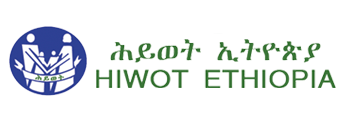Safeguarding
Project Description
Hiwot Ethiopia, established in 1995, has been dedicated to advancing the wellbeing of children and youth across Ethiopia through long-standing partnerships with both national and international actors. From October 2021 until May 8, 2023, with support from the Civil Society Support Programme – Phase Two (CSSP2), Hiwot Ethiopia implemented the “Safeguarding Children and Adults at Risk (SCAR)” project.
The project aimed to strengthen the safeguarding capacity of 53 CSSP2 grantees, the Ethiopian Civil Society Organizations Council (ECSOC), and government partners. It supported better understanding and implementation of safeguarding policies, procedures, and requirements to prevent abuse and exploitation.
In collaboration with Social Development Direct (SDD), Hiwot Ethiopia delivered safeguarding training, mentoring, and coaching to over 20 civil society organizations. Training areas included safe programming, safe recruitment, case management, and policy development. This comprehensive approach helped build capacity and embed safeguarding practices across CSOs and government institutions.
Mentoring & Coaching
Hiwot Ethiopia’s mentoring and coaching program provides tailored support to CSOs and ECSOC, focusing on:
- Developing contextual safeguarding policies and procedures
- Implementing safeguarding in day-to-day operations
- Handling abuse and exploitation cases through structured case management
- Conducting safeguarding risk assessments and applying mitigation strategies
The program is flexible and customized to meet the unique needs of each partner.
Safeguarding Training
Hiwot Ethiopia’s training empowers CSOs and government partners with tools to ensure protective environments for children and adults at risk. The training covers:
- Safeguarding vulnerable groups
- Safe programming and recruitment practices
- Case management system establishment and management
- Risk assessment and mitigation
Case Management
Hiwot Ethiopia’s participatory case management training includes:
- Case identification
- Complaint handling mechanisms
- Response procedures
- A survivor-centered approach
Training is interactive, encouraging peer learning and practical application.
Major Achievements
- Partner CSOs integrated safeguarding into proposals, policies, and operations, with dedicated budgets, risk assessments, and case management teams established.
- ECSOC embedded safeguarding in its Code of Conduct and formal agreements. Two safeguarding focal persons were appointed.
- 21 representatives from government institutions participated in training. The House of Representatives and the Ministry of Sport and Culture have begun cascading safeguarding protocols.
- As of April 2024, Hiwot Ethiopia leads the Ethiopian Safeguarding Resource and Support Hub (RSH) under a localization approach. (View RSH)
Case Stories
1. Meseret Humanitarian Organization (MHO)
MHO displays safeguarding policies at all shelters, with framed flowcharts in Amharic. A designated reporting person is available, and a revised safeguarding policy was approved by the Board with updated job descriptions. All staff and interns are trained and have signed a safeguarding code of conduct. Structured reference checks are conducted, and a suggestion box with contact information is available.
2. Redeem the Generation (RTG)
RTG allocates 1–2% of its project budget to safeguarding, especially in Oromia. Journalists are trained; printed consent forms are used for photography. Two safeguarding focal persons (male and female) are appointed at head office. New staff submit a guarantor’s ID and signed form. Other practices include:
- Internal investigation team led by trained staff
- Consent forms in English and Amharic
- Suggestion box at the main office
3. Ethiopian Civil Society Organizations Council (ECSOC)
ECSOC’s Code of Conduct (Article 24) addresses safeguarding. Safeguarding clauses are included in agreements with partners. Consent forms are available in both English and Amharic. Two safeguarding focal persons (one male, one female) are appointed, and a suggestion box is installed at the office.
4. God for People Relief and Development Organization (GPRDO)
GPRDO displays safeguarding reporting flowcharts in Amharic and conducts orientation at all community events and trainings. Every project activity includes a safeguarding briefing at the beginning, ensuring strong community-level awareness.
5. Endurance Youth Association (EYA)
EYA allocates 2% of its project budget for safeguarding and disability inclusion. In Lideta Sub-City, Woreda 01, the Health Sector Office has adopted safeguarding guidelines. Printed consent forms are used for photography. Two management-level focal persons (male and female) are appointed at the Head Office.







